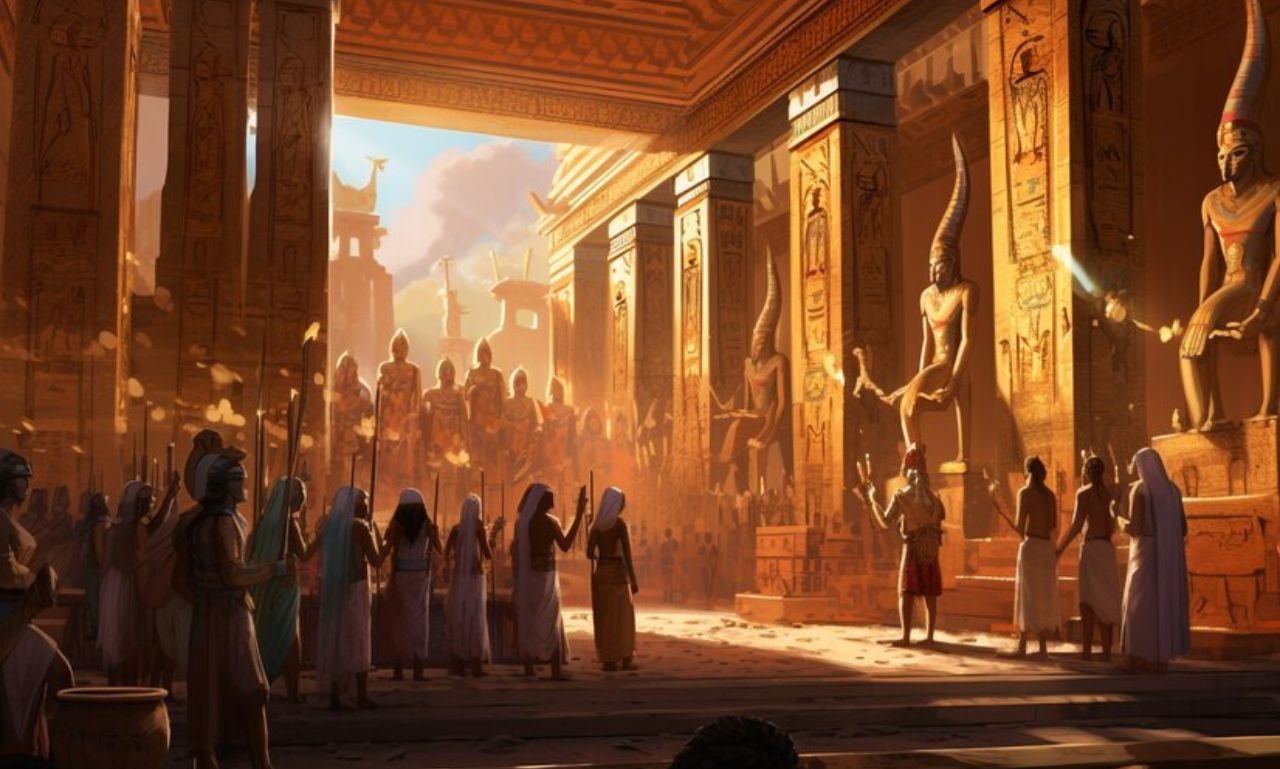The story of Ancient Artz stretches across centuries, reflecting the creativity, beliefs, and customs of ancient civilizations. From cave paintings and pottery to sculpture and calligraphy, ancient art forms provide a powerful lens into the lives, ideas, and philosophies of past cultures. For art enthusiasts, history lovers, and those curious about humanity’s journey, Ancient Artz offers a fascinating perspective into artistic expression that has shaped our cultural heritage and continues to inspire modern-day art.
What is Ancient Artz?
Ancient Artz refers to the diverse art forms and styles developed by early human civilizations, including painting, pottery, sculpture, metalwork, and more. These works not only served aesthetic purposes but also held religious, ceremonial, and functional significance, often symbolizing a civilization’s identity and beliefs. Ancient Artz spans regions worldwide, from the intricate pottery of ancient China to the colossal statues of ancient Egypt.
Each culture added its unique perspective, methods, and techniques, making ancient art a rich tapestry of human ingenuity and expression.
The Origins of Ancient Artz
Prehistoric Art: The Dawn of Creativity
Prehistoric art marks the beginning of Ancient Artz and includes the first known human-made images. From simple carvings on stone to elaborate cave paintings, prehistoric art gives insight into early humans’ interactions with nature, rituals, and survival. Key examples include:
- Cave Paintings: Found in regions like France, Spain, and Argentina, these paintings depict animals, human figures, and symbols, revealing early spiritual beliefs.
- Stone Carvings: Stones with carved symbols or animal figures were some of the earliest forms of communication and expression.
Ancient Civilizations and Their Artistic Contributions
With the rise of organized societies, art evolved, becoming more sophisticated and varied. Civilizations like Mesopotamia, Egypt, Greece, and China contributed significantly to Ancient Artz, leaving behind artifacts that embody their unique cultures. Highlights include:
- Mesopotamian Art: Known for cuneiform tablets, pottery, and monumental sculptures depicting gods and rulers.
- Egyptian Art: Famed for its statues, pyramids, and wall paintings, often related to religious beliefs and afterlife concepts.
- Greek Art: Recognized for idealized sculptures, pottery, and frescoes, with an emphasis on human beauty and proportions.
- Chinese Art: Includes intricate pottery, calligraphy, and jade carvings symbolizing harmony with nature.
Ancient Artz Techniques and Methods
Ancient Artz is characterized by its use of specialized techniques, many of which were pioneering for their time and continue to influence modern methods. Here are some notable techniques:
Sculpture and Carving
Sculpture was central in Ancient Artz, with artisans carving statues, reliefs, and ornaments from stone, metal, and wood. Each culture developed its unique style and method:
- Egyptian Sculpture: Highly stylized and symbolic, with large-scale statues and intricate carvings on temple walls.
- Greek Sculpture: Known for realistic forms and attention to anatomical detail, particularly in marble.
- Indian Sculpture: Focused on religious icons with elaborate details carved in sandstone, granite, and bronze.
Pottery and Ceramics
Pottery was essential not only as an art form but also for its practical use in storing food and water. Ancient Artz pottery includes various styles, shapes, and decorative patterns:
- Greek Pottery: Famous for black- and red-figure techniques, depicting mythological and daily life scenes.
- Chinese Ceramics: Known for delicate porcelain and celadon glaze techniques that produced iconic blue and white pottery.
- Native American Pottery: Made using hand-coiling techniques, decorated with symbolic patterns reflecting tribal culture.
Painting and Calligraphy
Painting and calligraphy were important means of communication and religious expression in many ancient cultures:
- Egyptian Wall Paintings: Depicted gods, pharaohs, and life scenes in tombs, using natural pigments for vivid color.
- Chinese Calligraphy: Considered a high art, blending aesthetic form with written language to convey philosophical ideas.
- Roman Frescoes: Utilized in domestic and public buildings to depict mythology, landscapes, and portraits with rich colors.
Metalwork and Jewelry
Metalwork showcased both artistic skill and technological advancement in Ancient Artz, with artisans creating tools, weapons, and jewelry:
- Mesopotamian Goldsmithing: Featured intricate jewelry and decor for temples, using precious stones and gold.
- Celtic Metalwork: Known for complex patterns and intricate designs, often seen in armor, jewelry, and tools.
- Egyptian Jewelry: Emphasized color and symbolism, using lapis lazuli, turquoise, and other stones for amulets and headdresses.
Cultural Significance of Ancient Artz
Ancient Artz holds cultural significance, serving various functions in ancient societies. Here’s how these artworks impacted civilizations:
Religious and Spiritual Significance
Art played an essential role in religious practices, with statues, paintings, and symbols used to honor gods and spirits. Examples include:
- Egyptian Statues of Deities: Placed in temples and tombs to aid in the afterlife journey.
- Greek Temples and Altars: Decorated with sculptures and frescoes to honor the pantheon of gods.
- Mesoamerican Pyramids: Built for spiritual ceremonies, often adorned with intricate carvings depicting deities.
Social and Political Influence
Art often symbolized power and status in ancient societies, commissioned by rulers to demonstrate their authority and achievements:
- Roman Busts and Monuments: Statues and monuments of emperors conveyed strength and leadership.
- Chinese Emperor Seals: These intricate seals were used to signify authority and mark official documents.
- Assyrian Palace Reliefs: Detailed carvings depicting kings and battles as symbols of conquest and strength.
Preservation of Daily Life and Cultural Values
Ancient art forms like pottery, paintings, and carvings provide insight into everyday life, showcasing clothing, rituals, and societal norms:
- Greek Pottery Scenes: Depict daily life, sports, and celebrations, providing a window into ancient Greek culture.
- Mayan Codices: Painted manuscripts that record Mayan history, astronomy, and religious beliefs.
- Roman Mosaics: Detailed artwork found in homes and public spaces depicting daily activities and leisure.
The Lasting Impact of Ancient Artz on Modern Culture
Ancient Artz has not only preserved history but also inspired contemporary art, architecture, and design. Here are some ways ancient art influences today’s world:
Inspiration in Modern Art
Modern artists frequently draw from ancient techniques and symbolism, blending traditional themes with contemporary ideas. Examples include:
- Abstract Sculpture: Influenced by ancient geometric and stylized forms seen in Greek and African art.
- Symbolism in Painting: Modern artists often use symbols from ancient cultures to convey philosophical or social messages.
Architecture and Design
Ancient Artz continues to inspire architecture, with ancient structures like the Parthenon and the Egyptian pyramids influencing modern design elements:
- Neo-Classical Architecture: Emulates ancient Greek and Roman structures, seen in many government buildings worldwide.
- Decorative Interiors: Ancient motifs, such as Egyptian hieroglyphics or Roman mosaics, add historical elegance to modern decor.
Revival of Craft Techniques
Craftspeople are reviving ancient art techniques, such as pottery, metalwork, and weaving, to create functional art pieces that respect traditional craftsmanship:
- Handmade Ceramics: Artisans use ancient pottery techniques to create unique, handcrafted pieces.
- Jewelry Making: Inspired by Egyptian and Mesopotamian metalworking, artisans create jewelry that reflects ancient designs.
Notable Artifacts of Ancient Artz
The world’s museums are filled with iconic artifacts that showcase the beauty and complexity of ancient art. Some notable pieces include:
- The Bust of Nefertiti: Egyptian queen’s limestone bust, symbolizing beauty and sophistication.
- The Terracotta Army: Thousands of life-size clay soldiers in China, representing the power of Emperor Qin Shi Huang.
- Venus of Willendorf: A small prehistoric statue symbolizing fertility, one of the earliest known human figures.
Conclusion: The Enduring Legacy of Ancient Artz
Ancient Artz is a testament to human creativity, offering a glimpse into the diverse cultures that have shaped civilization. From religious artifacts to symbols of power and daily life, ancient art connects us to our shared heritage and highlights the enduring importance of creative expression. Today, Ancient Artz continues to inspire, reminding us of the timeless beauty, complexity, and cultural significance of the art forms passed down through generations. As we appreciate and study these works, we not only honor ancient artisans but also find new ways to celebrate and preserve their legacy for future generations.











